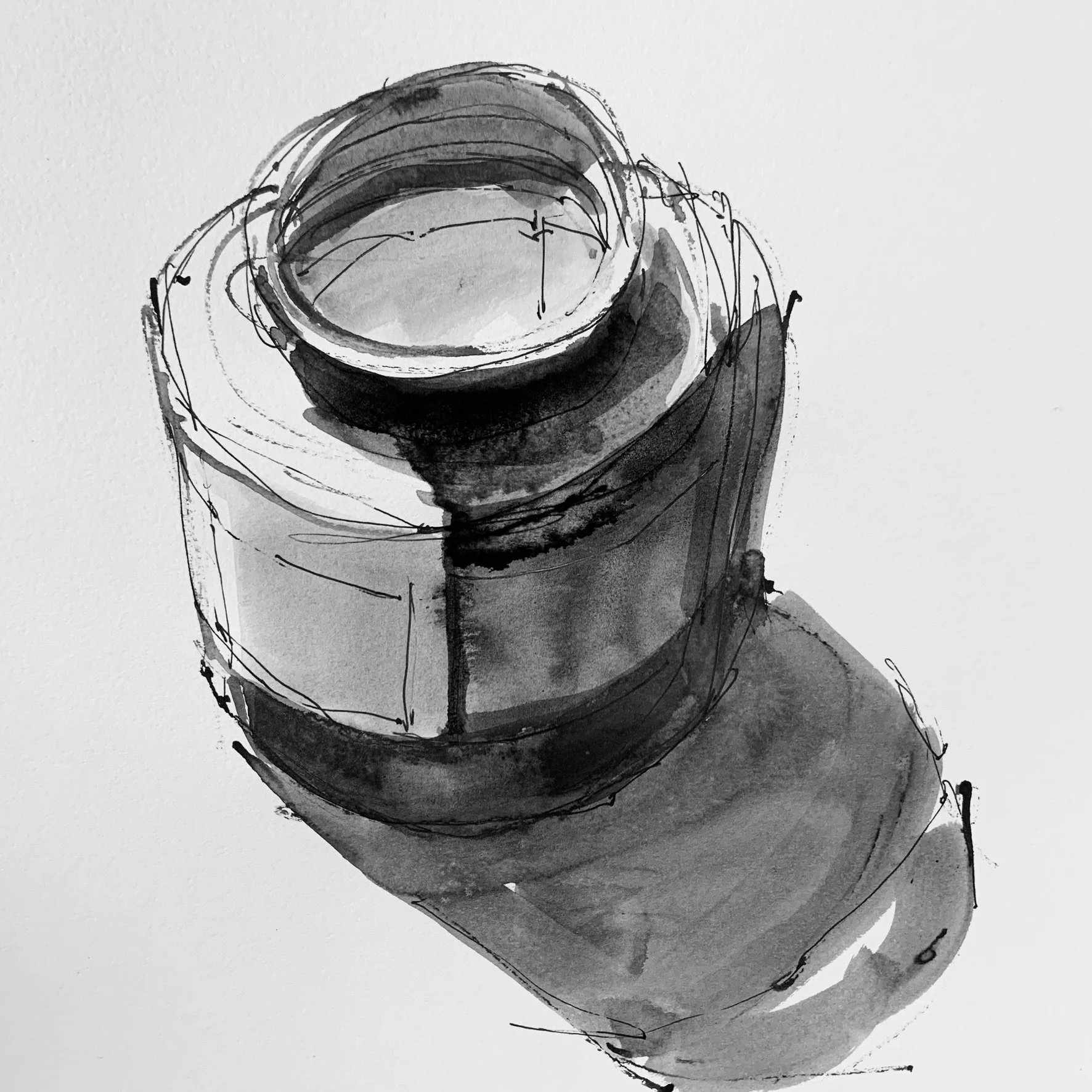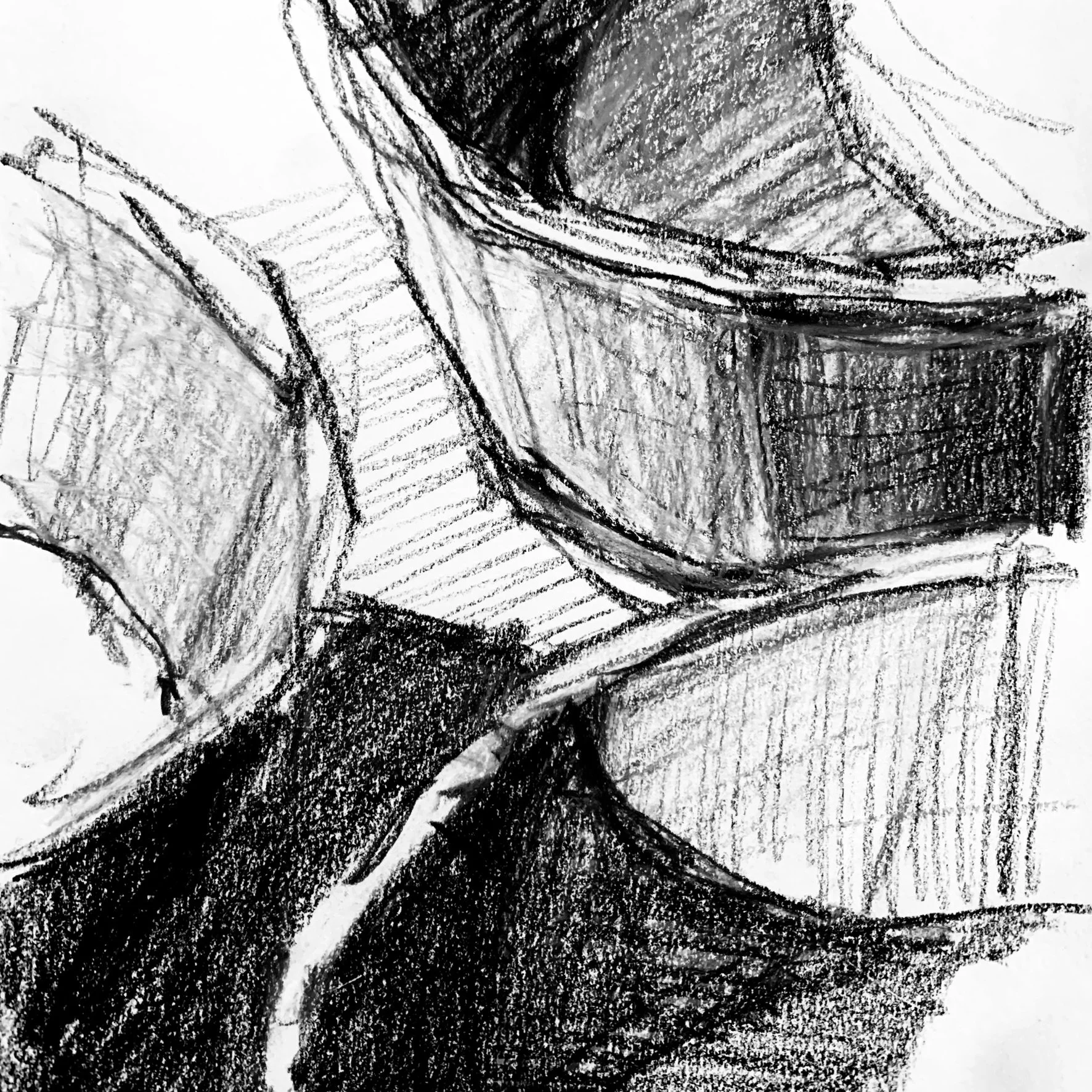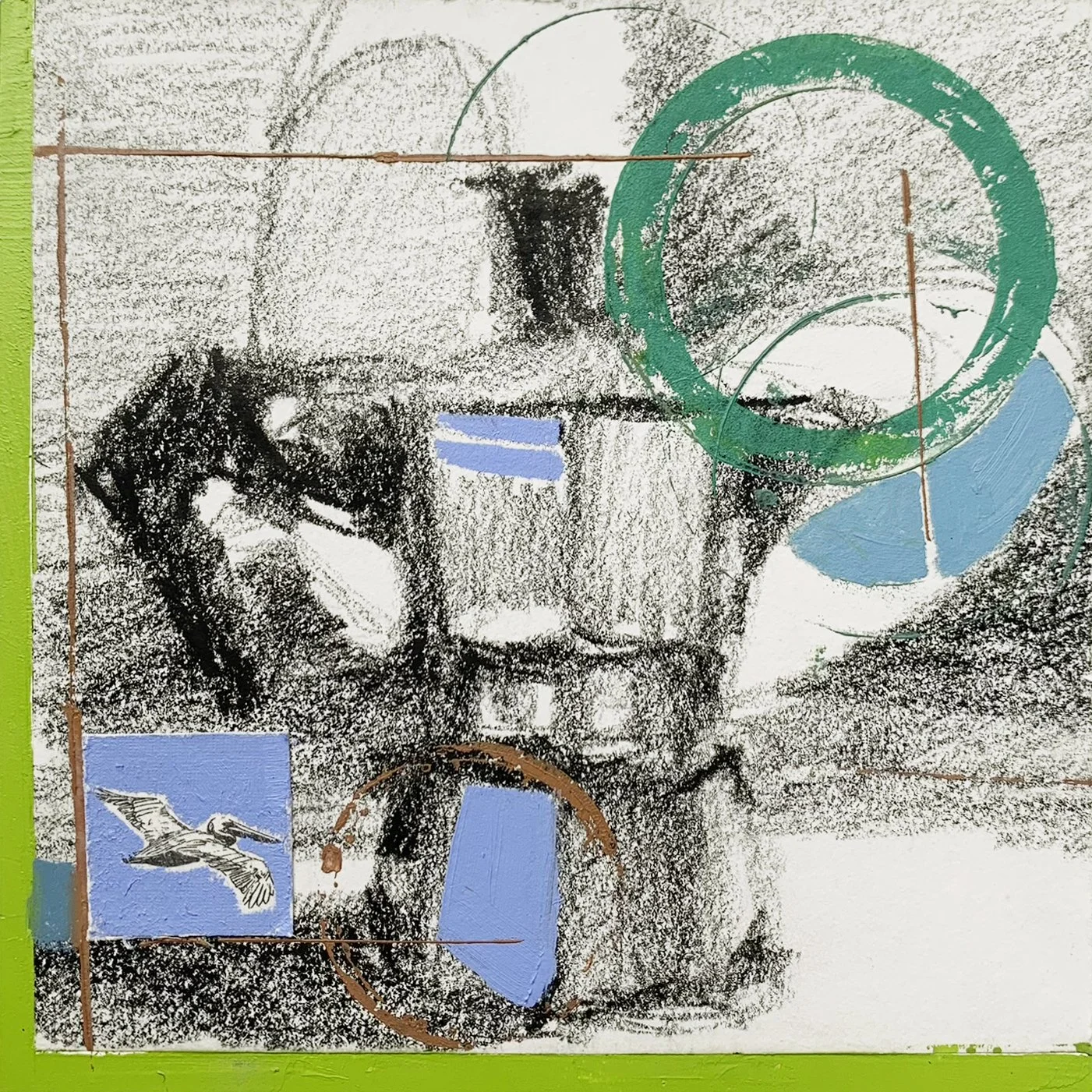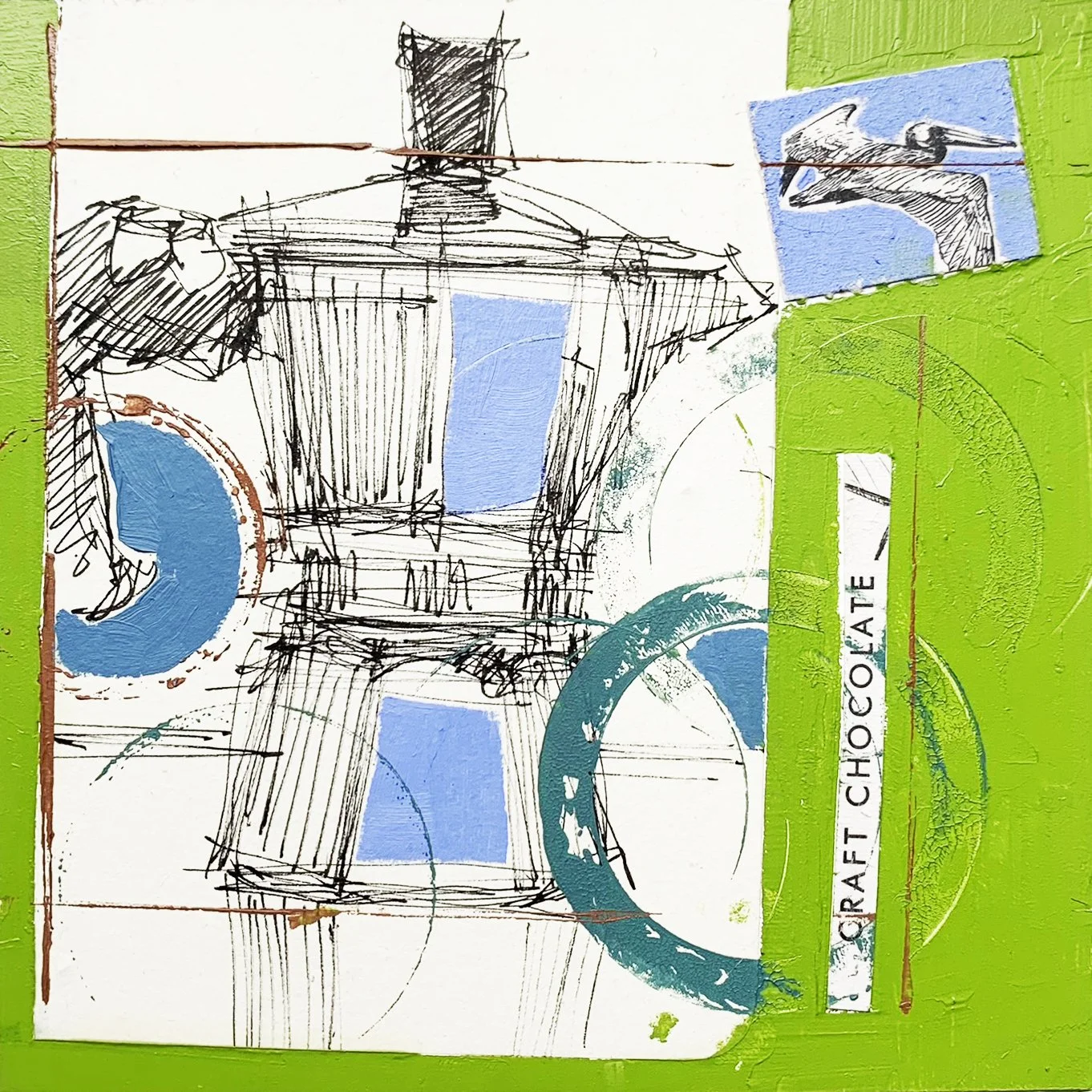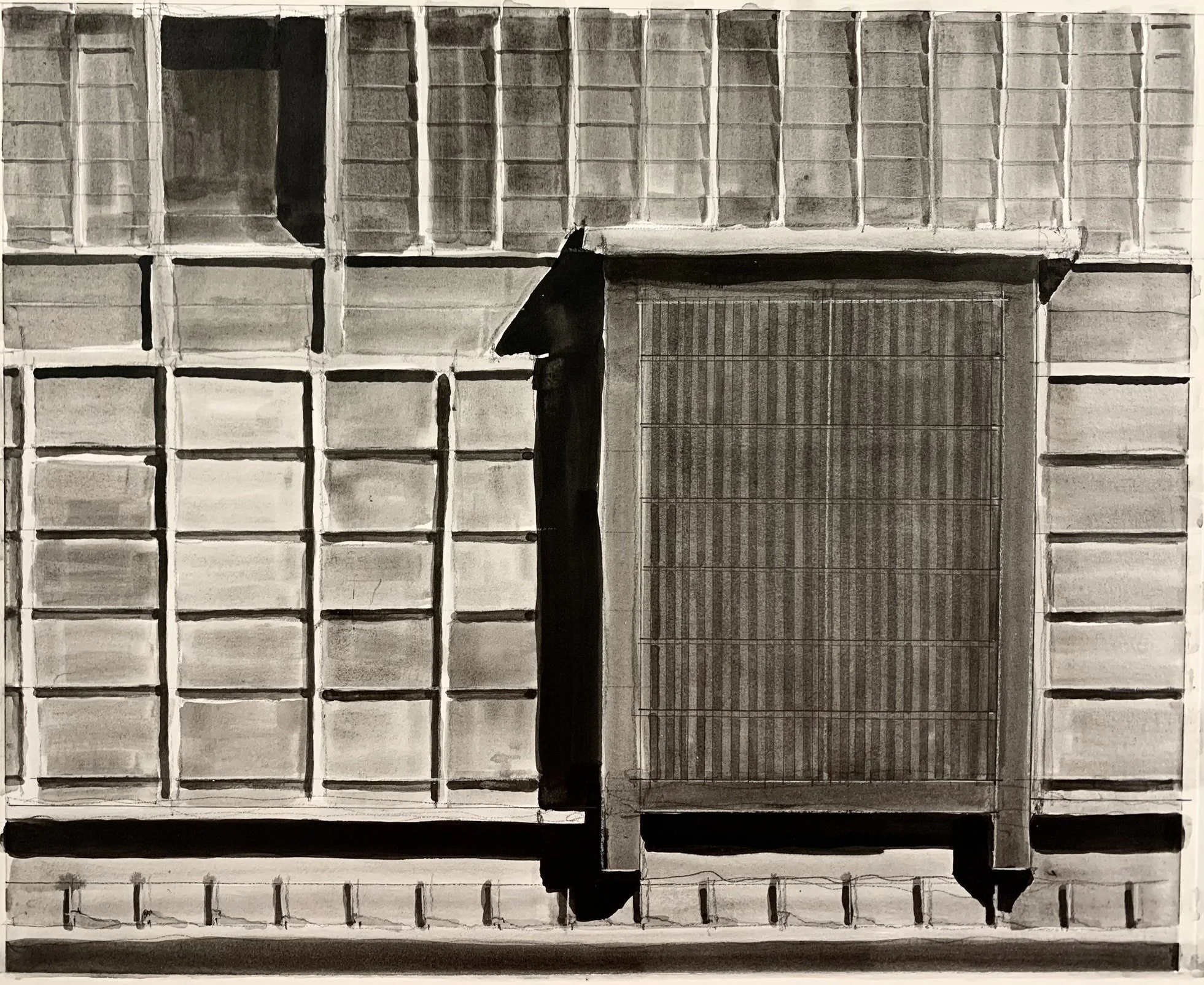Drawing to Explore and Experiment
/Drawing has always been my entry point to art. Whether I’m experimenting with composition, sketching loosely, or rendering a favorite object in detail, drawing with a variety of media and purpose underpins my practice. It helps me see, think, and engage more deeply with both form and concept.
Ink, charcoal and graphite vessel studies
Every mark is an experiment. Drawing allows me to test how shapes, lines, and space interact, and how they communicate ideas or mood. It’s a tool for both observation and invention, helping me understand not just what I see, but how I see.
Mixed-media and collage studies on panel and paper
I always encourage my students to start with the basic questions about their intentions:
What is a drawing?
Why Do I draw?
How do I explore when I draw?
What media best serves my intentions?
Am I too content in my comfort zone?
Drawing is more than skill — it’s a way to think, notice, and engage with the world. By observing, drawing, experimenting, and stepping back at regular intervals to take stock of what I’ve done, a drawing practice becomes an exploration of ideas, perception, and presence. Mary Oliver wrote, “Attention is the beginning of devotion”. A drawing practice is a great way to cultivate that need to look deeper.
India Ink drawings of Japanese Edo period architectural details
When I draw, say, a still-life or landscape, I experiment using different media—charcoal, graphite, collage, pastel, raw gesso, India ink. I Notice how each medium affects my marks, compositional tendencies and dynamics. It’s always fruitful when I push myself beyond my comfort zone, changing how I hold the tools and regularly introducing new ones that I’m unfamiliar with. Also, I study examples from other artists to discover new approaches and ideas. In today’s world of social media and internet ubiquity, images of contemporary and historic art are everywhere around us. Use that to your advantage and be a sponge, soaking up what is in front of you.
Mixed media and collage studies for “Water Ways” series
Expanding Your Drawing Practice - 5 Tips to Keep in Mind
Experiment with multiple media – Try different materials, both wet and dry, on the same subject to see how they influence your marks and perception.
Notice your focus – Pay attention to what naturally interests you: shapes, light, texture, composition, or layering.
Change your grip – Hold your drawing tool differently to discover new line qualities and expressive possibilities.
Step out of your comfort zone – Push beyond what feels safe to encourage risk, discovery, and more dynamic results.
Pause and reflect – Step back, observe your work, and note recurring patterns, tendencies, or surprises to guide future drawings. One note here: Don’t get hung up on critiquing your work. The idea is to simply notice tendencies and decide what you might do next.


